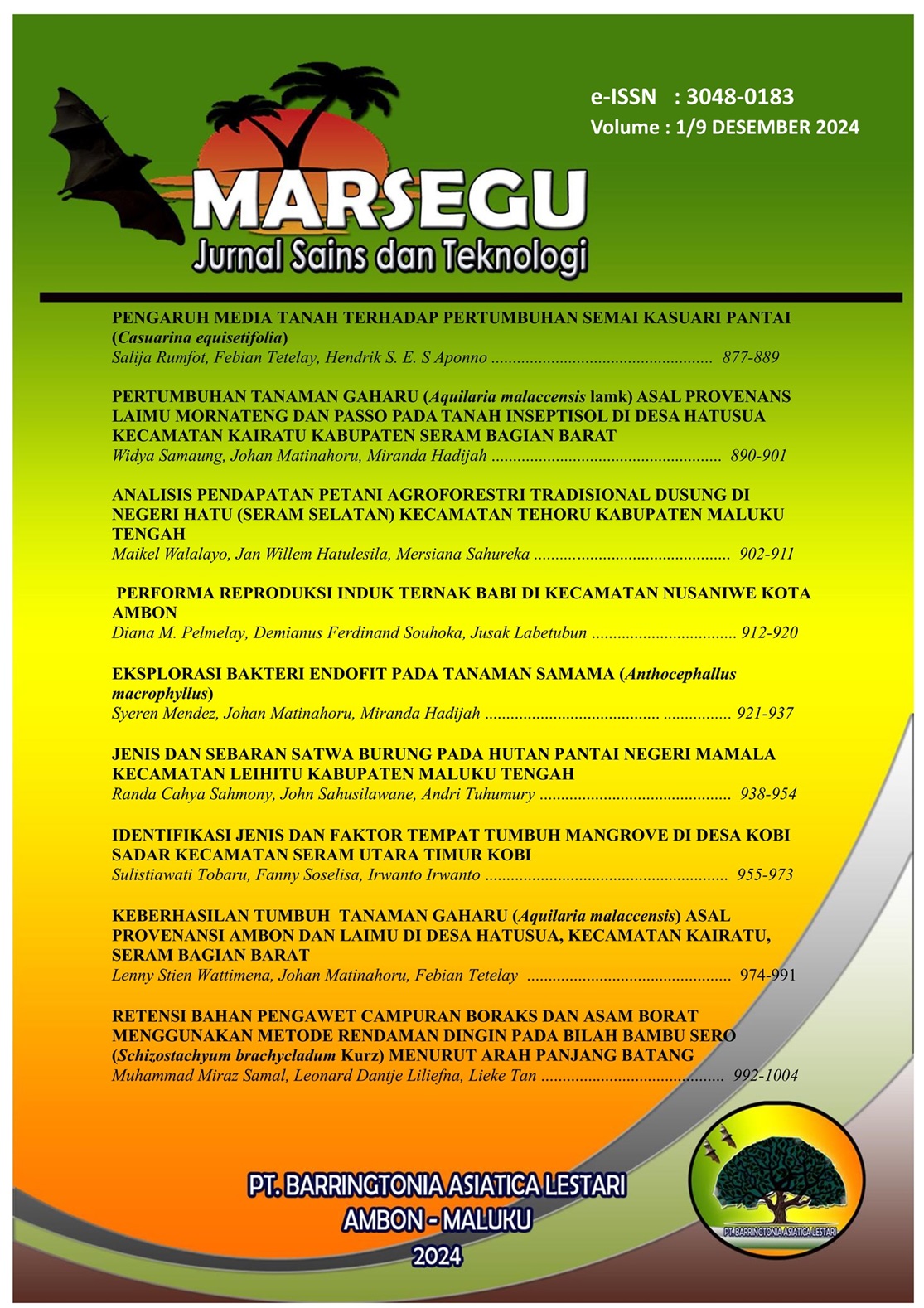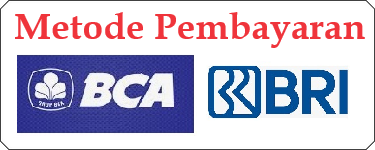PERFORMA REPRODUKSI INDUK TERNAK BABI DI KECAMATAN NUSANIWE KOTA AMBON
DOI:
https://doi.org/10.69840/marsegu/1.9.2024.912-920Keywords:
Pregnancy duration, Childbirth distance, Pregnancy ageAbstract
This study aims to determine the reproductive performance of pig farmers in Nusaniwe District, Ambon City. The research was carried out in Nusaniwe District, Ambon City, for 1 month using a survey method with interview techniques. The variables observed in the study were livestock ownership, livestock population, and reproductive performance of the parent including the age of the first mating, the age of the first calving, the length of pregnancy, litter size, calving distance, mortality and signs of fertility. The results showed that the average ownership of pigs based on the age phase of starter, grower, finisher and parent was 9.08 heads (0.9 ST), 6.32 heads (1.26 ST), 1.33 heads (0.53 ST) and 3.33 heads (1.33 ST) respectively. The population structure based on sex is dominated by female cattle 60.75%, and male cattle only 39.24%, while based on the level the respective ages of children were 45.15%, young 23.40%, and adults 23.40%. The reproductive performance of sows showed that the average age of first mating was 9.84±1.89 months, the first calving age was 13.98±1.83 months, the gestation duration was 11628±2.93 days, the litter size was 5.56±2.47 heads, the calving distance was 8.95±1.29 months, and the mortality was 0.33%. The signs of birahi that farmers understand are restless and silent when riding 66.2%, not knowing 33.8%. It was concluded that the reproductive performance of sows in Nusaniwe District was good.
Downloads
References
Anonim, 2002. Beternak Babi Edisi ke-19. Penerbit Kanisius,Yogyakarta
Ardana, 2012. Manajemen Sumber Daya Manusia. Penerbit Graha Ilmu, Yogyakarta.
Aritonang, D., & Silalahi, M., 2001. Produktivitas Berbagai Galur Babi Ras Impor Selama Periode Laktasi. Jurnal Ilmu Ternak Dan Veteriner. Vol. 6 No. Ternak Babi. Surakarta: Lily Publisher. Hal 31-43.
Agri, F., 2011. Cara Mudah Usaha Ternak. Cahaya Atma. Yogyakarta.
Johns, C., Cargill C., Patrick I., Geong M., Johanis, 2010. Budidaya Ternak Babi Komersial Oleh Peternak Kecil di NTT Peluang Untuk Integrasi Pasar Yang Lebih Baik.Laporan Akhir ACIAR.Canberra (Australia): Australian Centre for International Agricultural Research.
Kaka, A., 2017. Performans Reproduksi Induk Babi Yang Dipelihara Secara Intensif Di Kelurahan Kambajawa Kabupaten Sumba Timur. Reproductive performance of the sows maintained intensively in Kamba-jawa District, East Sumba Regency. Jurnal Ilmu-Ilmu Peternakan, 28 (1), 1-9
Mangembulude, N., Sadsoeittoeboen, P.D., & Anwarudin, O., 2021. Persepsi Peternak Lokal Terhadap Menurunya Tingkat Populasi Ternak Babi di Kampung Masni Kabupaten Manokwari Provinsi Papua Barat. In Prosiding Seminar Nasional Pembangunan dan Pendidikan Vokasi Pertanian (Vol.2, No.1. pp.22-32).
Parakkasi, 1990. Ilmu Gizi dan Makanan Ternak Monogastrik. Penerbit Angkasa, Bandung.
Sondang, P., & Siagian, 1999. Manajemen Sumber Daya Manusia, Bumi Aksara. Jakarta
Sihombing, D.T.H., 1991. Ternak Babi. Gadjah Mada University Press,Yogyakarta
Suberata, I.W., Sumardani, N.L.G., & Artiningsih, N.M., 2016. Kajian Aktivitas Ovarium Babi Betina Hasil Pemotongan. Ilmiah Peternakan. 19 (1) 2016:80-83.
Tirajoh,S.dan Usman 2011.Litter Size”Suatu Faktor Penentu Keberhasilan Dalam Usaha Ternak Babi.Seminar Nasional.Pengkajian dan Diseminasi Inovasi Pertanian Mendukung Program Strategis Kementerian Pertanian.Cisarua,9-11 Desember 2010.
Downloads
Published
Issue
Section
License
Copyright (c) 2025 Diana M. Pelmelay, Ir. Demianus F. Souhoka, MP, Jusak Labetubun (Author)

This work is licensed under a Creative Commons Attribution-ShareAlike 4.0 International License.




















